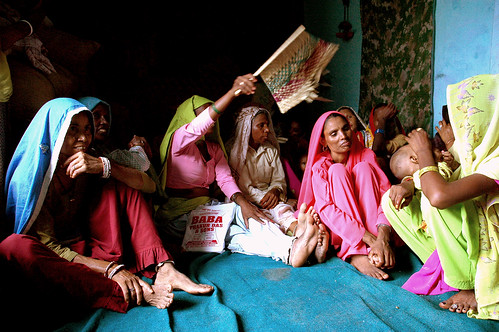
Kerala has been a pioneer in man power export in many areas and for long. But a new manifestation of this export should be causing all of disquiet. The state has largely been known for its export of man power as NRIs but of late it has begun exporting women as brides in girl starved North Indian states like Haryana. On the face of it, cross cultural marriages in an ethnically fragile country ought to be encouraged as a cementing factor – except for two things – The “ export” of brides and their relatively easy availability would mean that there is even lesser incentive for communities in many of these North Indian States to abort female fetuses. Demographic threats have often been held out as a potential deterrent that might work to retard the increasingly wide spread malaise of female feticide.
The other thing that is happening is that human trafficking, particularly trafficking in women and minor girls is shifting shapes and is often enough now coming disguised as marriages. Trafficked women are no longer clandestinely bought and sold as used to mostly happen, it is possible now to “marry’ such women and then “divorce’ such women who then go on to “ marry” other men.

With marriage – whatever be its colors enjoying social sanction, it becomes difficult to prosecute any one and with birth certificates and mirage registrations largely non existent in rural hinterlands, it is next to impossible prove that a particular girl was a minor or that a particular woman was not married but trafficked. In India in any case, the Prevention of Immoral Traffic Act despite its name, covers only offences occurring in brothels and non brothel based trafficking as occurs in these kind of sham marriages are not covered. So effectively India lacks current ant trafficking laws.
Of course the issue of trafficking and women being trafficked is not restricted to Kerala and is perhaps more rampant with more dire consequences in other impoverished states. “Trafficking can be disguised as migration, commercial sex or marriage. But what begins as a voluntary decision often ends up as trafficking as victims find themselves in unfamiliar destinations, subjected to unexpected work,” A BBC report for instance quoting the Assam police informs that since 1996 3,184 women and 3,840 female children have gone missing in the state and many have ended up working as call-girls around Delhi or used as “sex slaves” by wealthy landlords in states like Punjab and Haryana. That piece of statistic means that we are talking of about two women a day.
The market rate for a bride currently it seems is between 4,000 and 30,000 rupees ($88 to $660) and the custom of buying brides has not just infected the states of Haryana and Punjab only, it is spreading. In a district where the urban sex ratio is the lowest in the country at 678/1,000 and where the largest tehsil has a sex ratio of 535/1,000, the system of bride buying has become quite rampant in the last five years. Shahjahanpur’s block Bhawaal Kheda has several villages where, due to the low sex ratio, men have been buying brides from states like West Bengal, Orissa, Jharkhand and Bihar.
Coming back to the case of the brides out sourced , even if a woman is not bought and sold in the slave market, the racial memory of polyandry as in Draupadi it seems still persists. As the Hindu reports “ In some villages in Punjab, however, all the men in a household have access to the bought bride. She has no choice. Even if she is married to one brother, she must be available to all the other brothers in the house. Thus, polyandry exists, particularly in poor households where only one man can “buy” a wife. Sex selection has ensured that there are too few local women available. And poverty has dictated that only those with money can “buy” a woman. And with sex ratios touching 535 girls per 1000 boys in parts of the country, it may be that soon in places there may be no women to celebrate or observe the annual International Women’s’ Day that just went by.


No comments:
Post a Comment